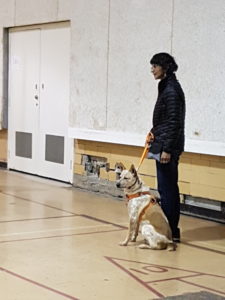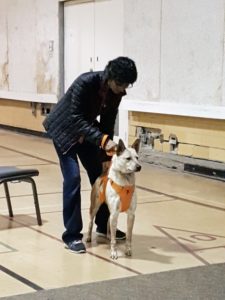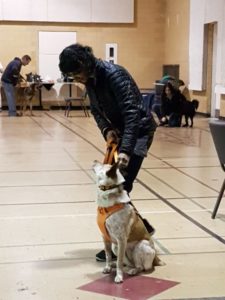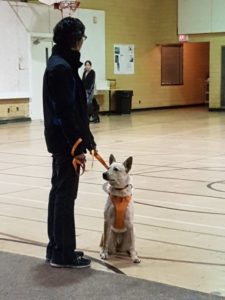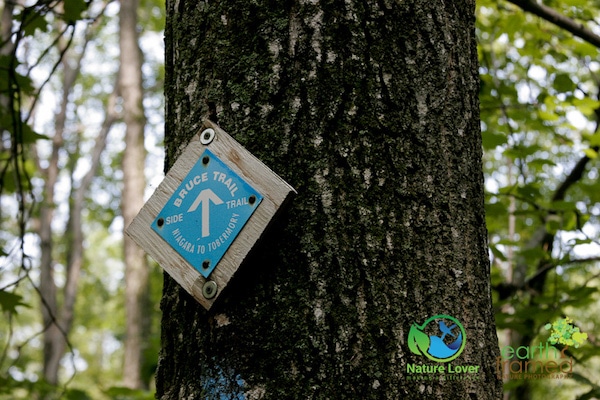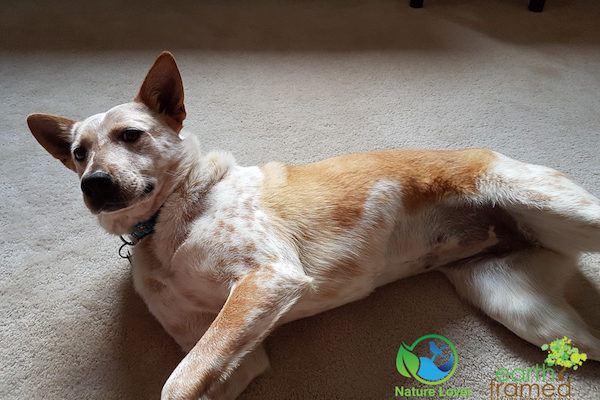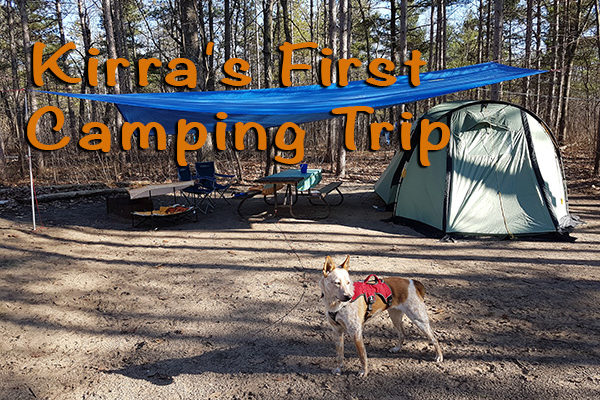Taking your new rescue dog, or puppy, to at least one obedience class is a must. We never took Maya but we decided it was a good idea for Kirra, and for us. These classes are as much for the owners as they are for the dogs. Learning to understand how to communicate with your pet is very important and it helps to develop a relationship based on trust and consistency. Keep in mind that the rule of thumb is that it can take up to 2 years for your dog to learn what’s expected with being a part of your family.
We chose one of the local instructors and signed up for the upcoming 6 week course, which started at the end of March, 2017.
Day 1
The first week’s class was an introduction for the parents of the puppies, no pets took part in this class. The instructor went over what would be covered, what we needed to bring with us and some other tips and suggestions. She also let us know some of her pet peeves, which lined up with ours – loose dogs, owners not cleaning up after their dogs and obese dogs.
She also told us that the concept of “alpha” has been debunked and that a more balanced approach of praise and correction is now seen as the more appropriate way to train a dog. Correction means providing the dog with more information, not punishment.
The instructor also recommended that we not use ‘doggy daycares’ or go to dog parks (unless it is off-hours). The reasons she gave were that many of the dogs taken to these places are not properly trained or socialized. Quite a few of the dogs are bullies and the areas are either unsupervised. In her opinion, these places will either teach your dog bad behaviours or they could get hurt or attacked by another dog.
The overall concept that she wanted us to understand was:
Be consistent. Be Patient. There are no gray areas with dogs, a behaviour is either right or it is wrong.
After each class, the instructor sent us an email with the homework for the week. Each day we were suppose to spend 10-20 minutes training her. At first we were told to train her with no distractions, either inside the house or in our yard. After each class we were instructed to try to slowly increase the distractions.
Day 2
The first class for Kirra went pretty good. She first learned to sit while walking. The way to do this is to apply pressure up on the collar and down on her butt with your hand. Chitra used the command “Sit” and then praised her when her bum was on the ground.
The other commands that were introduced on the first day were “Down” and “Heel”. When giving a command, we were told to say her name, slight pause and then the command. Her name should be used to get her attention and then the command should follow it.
We also learned two turns, one where you turn into your dog and the other where you turn away from her. Turns are used to make space between you and other ‘moving obstacles’, to get the dog’s attention and, sometimes, to distract the dog from something that has grabbed their attention.
Day 3
The beginning of day 3 we practiced all of the work we had done up to that point. The class started with “Heel”, sits while walking, going faster and then slower down during the “Heel” and the release. A release is a word you use to let them know that they are no longer expected to be following a specific command. We use “Okay”. You have to make sure you do not allow them to stop following the last command when you verbally praise them (“good girl”) or when you reward them with a treat.
The next command we learned was “Sit / Stay”. With this command, the goal is to be able to put the dog in a sit position and then move around or away from them while they stay in that position. The dog is learning to continue to follow a command until you release them, not when you move away from them. We also learned and practiced “Down / Stay”.
“Come” was introduced near the end of the class. We learned to call Kirra while moving back away from her. This draws the dog toward you and hopefully makes them run to you. As soon as she made the decision to follow the command, we were told to verbally praise her. When she got to us, she was told to sit and then was rewarded with a treat. You should never use “Come” to punish a dog or to make them do something they do not like. It should always be a good, happy, rewarding experience, otherwise the dog will decide whether to come or not.
A dog needs to learn a command in at least 12 different locations before they will generalize the command.
Circles were also done on day 3. A circle is where the owner makes a complete circle and then continues walking in the same direction as before.
Kirra did very well during the first three weeks. There was no physical contact allowed between the dogs and although she sometimes would look around at them, she didn’t lunge or bark, which was great.
Obedience classes are more about learning techniques and then practicing them daily on your own time. The instructor shows you how to do something, gives you some pointers if it isn’t working out, and then tries to reinforce those techniques on a weekly basis.
The owners are the ones who are actually do the major work and it is important that the dog trains on a regular basis. It was obvious in the class that some people were spending the time, while others weren’t. You will only get out what you put in, so we highly recommend that each person in your family spend at least 5 minutes each a day training the dog. And don’t stop once the class is finished!



